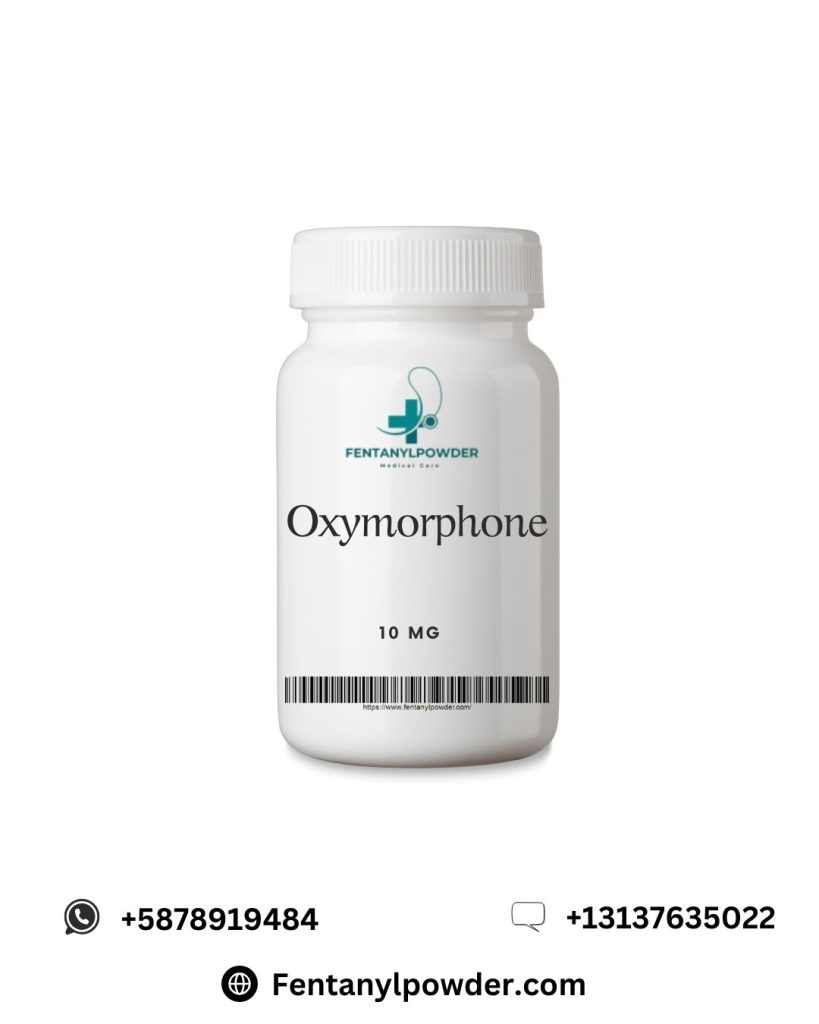What is Oxymorphone?
What is Oxymorphone used for?
- Management of short-term pain (immediate-release tablet only) or long-term pain (extended-release tablet only) that isn’t relieved by non-opioid pain medications alone
How Oxymorphone works
Oxymorphone is an opioid. It attaches to certain opioid receptors in your brain to lessen how much pain you feel.
What are the risks and warnings for Oxymorphone?
Oxymorphone can cause some serious health issues. This risk may be even higher for certain groups. If this worries you, talk to your doctor or pharmacist about other options.
Potential for addiction and misuse
- Risk factors: Personal or family history of alcohol or substance use disorder | Personal or family history of mental health problems
Oxymorphone is a controlled substance because it has a risk for misuse and addiction. To lower this risk, your pain specialist will prescribe you the lowest dose needed to manage your pain for the shortest period of time. Take the medication exactly as prescribed. Don’t change how much or how often you take it without talking to your prescriber first.
Never break or crush oxymorphone ER because this medication has a special coating that allows it to be slowly released in your body. Damaging the coating will cause the body to absorb too much medication too quickly and put you at very higher risk for serious and life-threatening side effects, such as dangerously slow breathing and trouble staying awake.
Because of the risk for misuse and addiction, oxymorphone is only available through a Risk Evaluation and Mitigation Strategy (REMS) program called the Opioid Analgesic REMS program. Your prescriber and pharmacy must register with the program, receive training on proper medication use, and discuss with you about how to take oxymorphone safely.
Dangerously slow breathing (respiratory depression)
- Risk factors: Taking medications that can cause slow breathing | Drinking alcohol | Older age | Being frail | Medical conditions that cause breathing problems (e.g., COPD, asthma, head injury) | Taking too much oxymorphone
Oxymorphone can cause dangerously slow breathing, which can be life-threatening. This can happen to anyone and even at recommended doses. But the risk is greatest when you first start treatment or when your pain specialist raises your dose.
Your pain specialist will recommend that you have naloxone (Narcan) to carry with you at all times. Naloxone is a medication that can reverse slowed breathing from opioids. Use naloxone, call 911, and get medical help right away if you or your loved one notices that you have trouble breathing or have bluish-colored lips, fingers, or toes.
Risk for opioid overdose
- Risk factors: History of opioid use disorder | Previous opioid overdose | Taking high doses of oxymorphone | Taking more opioids than prescribed | Alcohol use
Take oxymorphone exactly as prescribed. Taking too much medication or taking it more often than prescribed can lead to an overdose. It can be very dangerous if someone accidentally swallows the medication. Be sure to keep oxymorphone out of reach from children, pets, and visitors to prevent accidental exposure or overdose.
Symptoms of an opioid overdose include not responding to sound or touch, extremely slow breathing, slow heartbeat, extreme sleepiness, and cold or clammy skin. Be sure you and your loved ones know how to recognize an overdose. Your prescriber will recommend getting naloxone (Narcan) — either by prescription or over the counter. Naloxone can help treat an opioid overdose. Carry naloxone with you at all times; use it and call 911 right away if an overdose happens.
Difficulty concentrating and extreme sleepiness
- Risk factors: Taking high doses of oxymorphone | Age 65 years or older | Drinking alcohol | Taking other medications that can cause sleepiness
Oxymorphone can cause extreme sleepiness and lower your ability to think, react, and focus. Don’t drink alcohol with oxymorphone. Also don’t take oxymorphone with other medications that can cause sleepiness or “brain fog” (e.g., benzodiazepines, muscle relaxants, sleep medications). Otherwise, these side effects might worsen.
Make sure you know how oxymorphone affects you before driving a car or doing activities that require your concentration. Talk to your prescriber right away if you feel too sleepy from the medication.
Serious interactions
Oxymorphone can have serious interactions with alcohol and several medications. For example, drinking alcohol while you’re taking oxymorphone can put you at serious risk for drowsiness and confusion. Also, taking oxymorphone with medications that slow your body down (e.g., benzodiazepines, other opioids, muscle relaxants) can put you at risk for having dangerously slow breathing.
Let your care team know what medications you’re taking to make sure they’re safe for you to take together. Also speak with your care team first before making any changes to your medications because sudden dose adjustments can be harmful.
Harm to newborn babies
Long-term use of oxymorphone during pregnancy can cause your unborn baby to become dependent on the medication. This is because oxymorphone can pass through the placenta to your unborn baby.
Once your baby is born, they can experience withdrawal symptoms, such as high-pitched crying, poor feeding behavior, trembling, abnormal sleep patterns, and even seizures. This condition is called neonatal opioid withdrawal syndrome and can be life-threatening if not recognized and treated in time. Let your healthcare professional (HCP) know if you’ve taken oxymorphone during pregnancy or if you notice these symptoms in your baby.
Physical dependence and withdrawal
- Risk factors: Long-term use of oxymorphone
If taken regularly for a long time, oxymorphone can cause physical dependence. This means that your body relies on the medication to function. And you might experience withdrawal if you lower your dose too quickly or suddenly stop taking the medication. Withdrawal symptoms include anxiety, restlessness, irritability, runny nose, yawning, sweating, and chills.
Don’t suddenly lower your dose or stop taking oxymorphone suddenly without talking to your prescriber first. If you need to stop this medication, your prescriber will slowly lower your dose over time to prevent withdrawal symptoms. Talk to an HCP if you have concerns about taking oxymorphone because of the risk for withdrawal.
Serious allergic reaction
Some people have experienced serious allergic reactions after taking oxymorphone. Symptoms have included swelling of the face and tongue, hives, rash, nausea and vomiting. If you experience any of these symptoms, let your healthcare team know. They might ask you to stop taking oxymorphone and consider other options.
Low blood pressure
Oxymorphone can cause extremely low blood pressure. For example, your blood pressure might suddenly drop when you stand from a sitting or lying down position. This can lead to dizziness and fainting. To avoid falling, get up slowly if you’ve been sitting or lying down. Talk to an HCP if dizziness or lightheadedness doesn’t go away.
Low adrenal hormone levels
- Risk factors: Taking oxymorphone for longer than 1 month
Some people taking opioid medications like oxymorphone have had low adrenal hormone levels. This might be more likely to happen after taking opioids for longer than 1 month.
Tell your healthcare team if you have symptoms of low adrenal hormone levels, such as tiredness, dizziness, weakness, not feeling hungry, nausea, and vomiting. If your adrenal hormone levels are too low, you might need to stop oxymorphone and get treated with corticosteroids.
Seizures
- Risk factors: History of seizure conditions
If you’ve had a seizure in the past, oxymorphone can raise the risk of having seizures more often. Opioids can also raise your risk of seizures in certain situations. Get medical help immediately if you have a seizure while you’re taking oxymorphone.
More on Oxymorphone warnings

Opioids and Alcohol: Why You Should Avoid Drinking If You Take Medications like Hydrocodone and Oxycodone
Written by Nicole E. Cieri-Hutcherson, PharmD, BCPS, NCMP

Opioid Addiction and Opioid Use Disorder: Symptoms, Treatment, and More
What are the side effects of Oxymorphone?
The following side effects may get better over time as your body gets used to the medication. Let your healthcare provider know immediately if you continue to experience these symptoms or if they worsen over time.
Common Side Effects
Immediate-release tablet
- Nausea (19%)
- Fever (14%)
- Sleepiness (9%)
- Vomiting (9%)
- Itching (8%)
- Headache (7%)
- Dizziness (7%)
Extended-release tablet
- Nausea (33%)
- Constipation (28%)
- Dizziness (18%)
- Sleepiness (17%)
- Vomiting (16%)
- Itching (15%)
- Headache (12%)
- Sweating (9%)
- Dry mouth (6%)
Other Side Effects
Immediate-release tablet
- Constipation
- Confusion
- Dry mouth
- Passing pass
- Feeling anxious
Extended-release tablet
- Diarrhea
- Trouble sleeping
- Tiredness
- Low appetite
- Stomach pain
Serious Side Effects
Contact your healthcare provider immediately if you experience any of the following.
- Dangerously slow breathing: trouble breathing; bluish-colored lips, fingers, or toes
- Accidentally taking too much (overdose): not responding to sound or touch, slowed breathing, slow heartbeat, extreme sleepiness, cold or clammy skin
- Opioid withdrawal: anxiety, suicidal thoughts, restlessness, irritability, runny nose, yawning, sweating, chills, wide pupils
- Serious allergic reaction: itchy, red rash (hives); shortness of breath; chest tightness; swelling of lips, tongue, throat, face, or eyes
